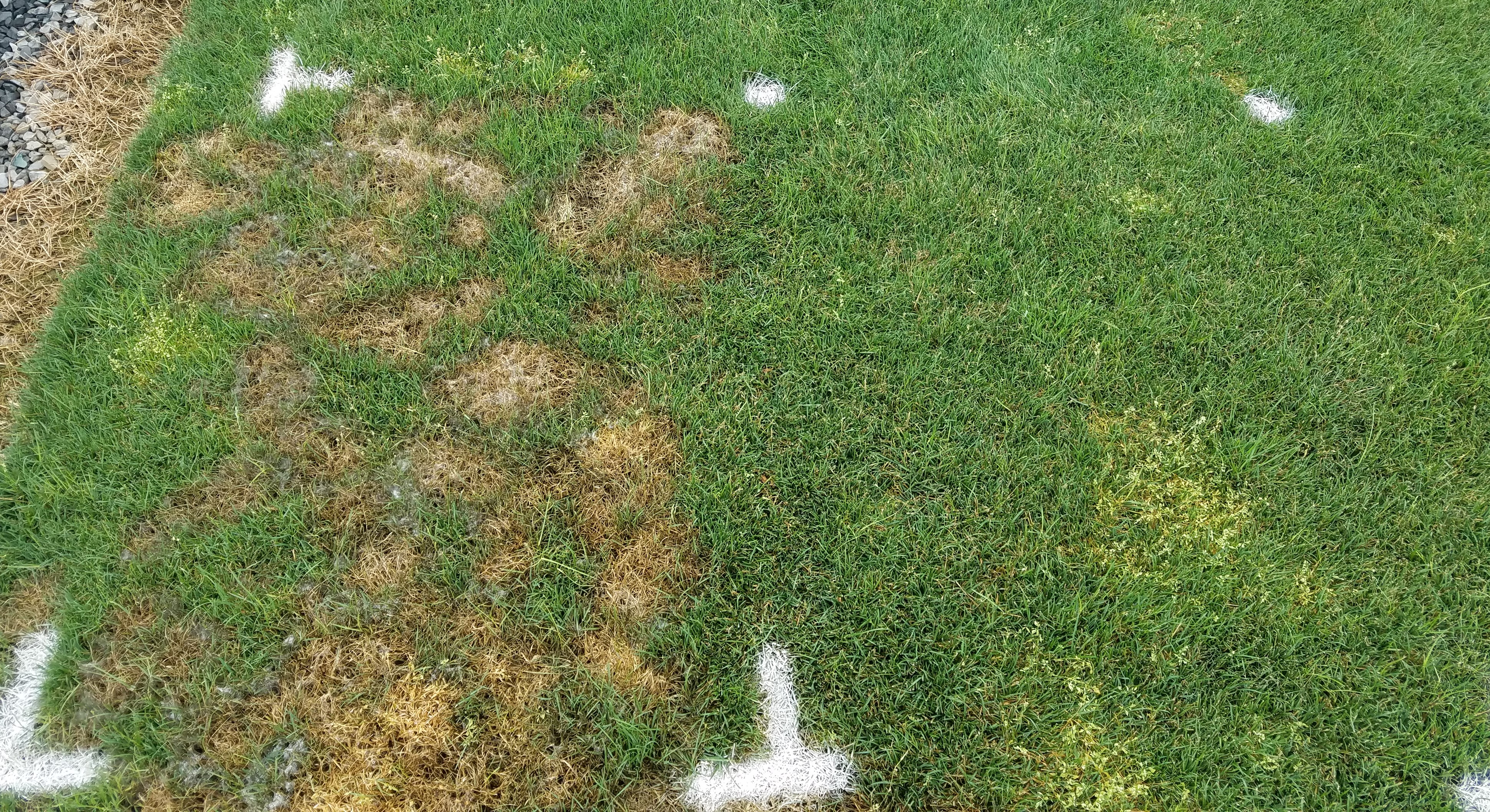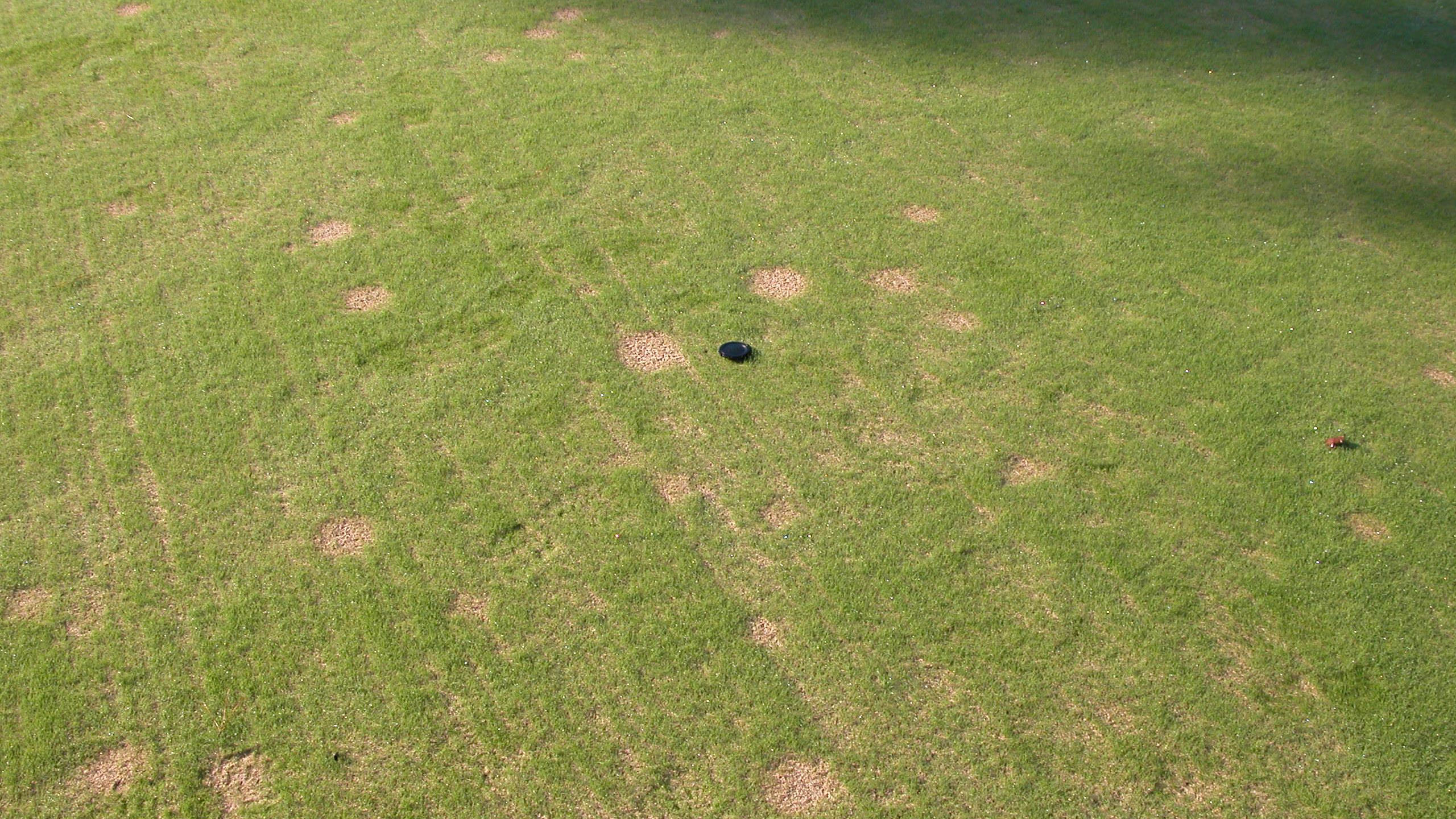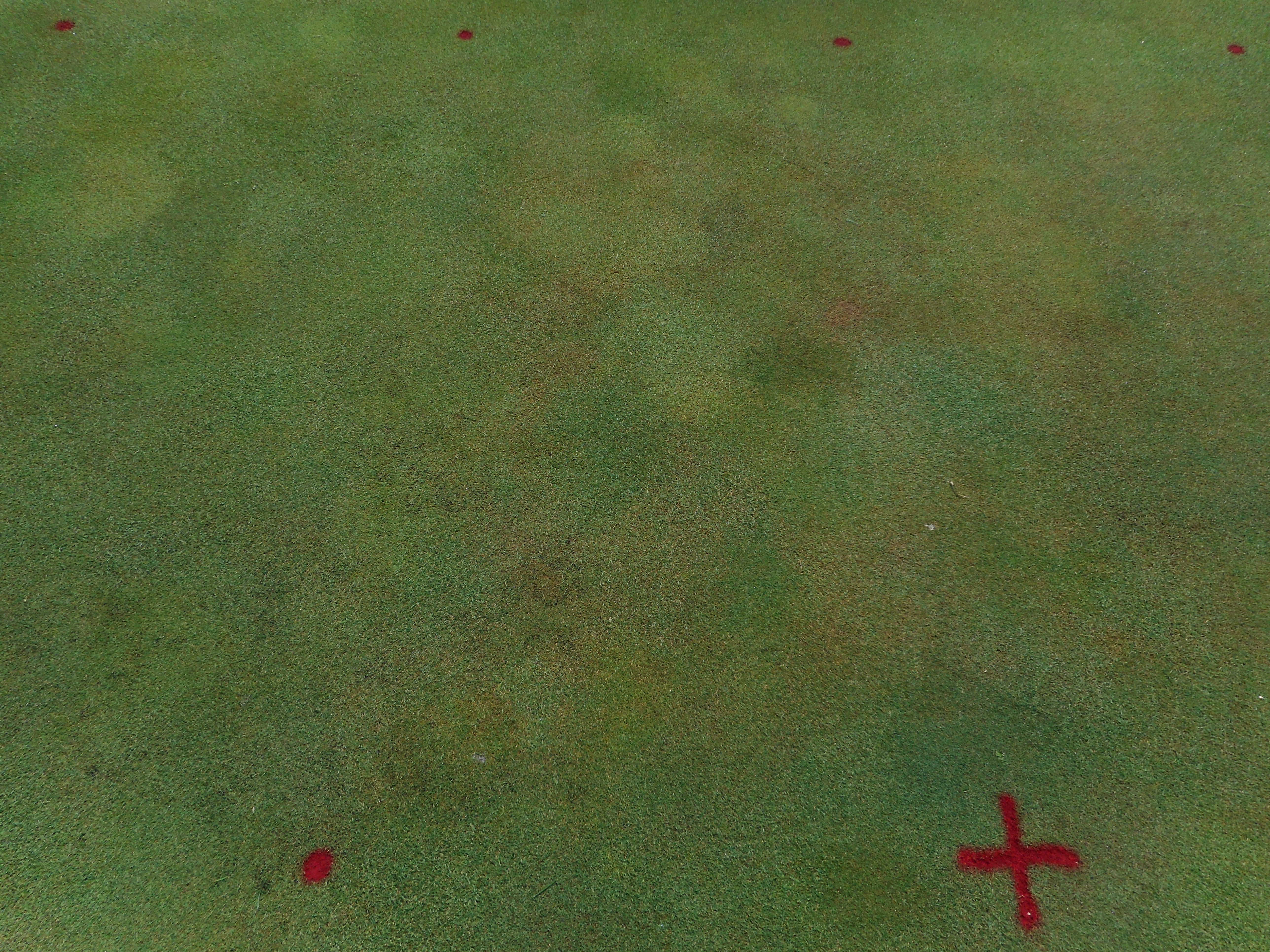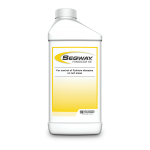Call it 2020’s last gut punch
The year is taking one last swing at us, and we might not feel it until next year. The punch 2020 is throwing is Pythium disease. It infects turfgrass roots in the fall and spring, and then waits until hotter weather to damage your turf.
There are four main types of Pythium disease:
Pythium root dysfunction
Pythium root dysfunction reduces roots’ ability to absorb nutrients and water. Infected roots are darker in color and lack root hairs, and plants can thin, develop discoloration, and possibly die.
Pythium blight

Pythium blight appears as circular patches of collapsed leaves and stems in sunken pockets of infected turf about 6 inches in diameter. It spreads quickly, especially during rainy or humid periods any time of year.
Pythium damping-off

Pythium damping-off impacts turf seedlings, first appearing similar to seedling wilt, then causing further decline, with seedlings turning dark and eventually dying off.
Pythium root rot

Pythium root rot symptoms develop as temperatures rise, and include irregular patterns of orange or yellow turf, and the individual plants appear dark and greasy.

Fortunately, Segway Fungicide SC gets them all. Segway controls Pythium root dysfunction, Pythium blight, Pythium damping-off and Pythium root rot. And Segway has no known cross-resistance with other classes of fungicides, so it’s excellent for resistance management programs.
Learn more about Segway Fungicide SC.
Photos: PBI-Gordon








